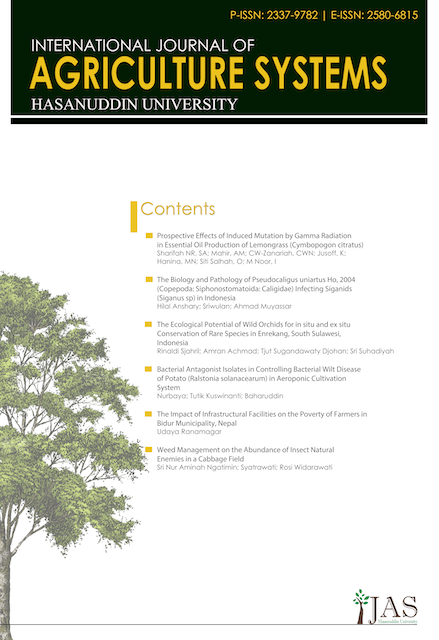Abstract
Poultry production is a reliable animal protein source used in different communities. Malodor emitted
from poultry houses limits their production and significantly contributes to air pollution. Mitigations
are thus required to make broiler chicken production more environmentally friendly and productive. This
study investigated the role of effective microorganism (EM) on broiler performance and odor emission
from litter in broiler chicken production. A total of 180-day-old chicks were divided into four treatments:
T0 (without EM-supplementation), T1 (EM-supplemented in water), T2 (EM-supplemented in feed), and
T3 (EM-supplemented in water+feed), with three replicates of 15 birds each. Data on broiler performance,
including water intake (WI), feed intake (FI), average weight gain (ADG), feed conversion ratio, and
carcass characteristics, were measured and analyzed using one-way ANOVA in SPSS (version 25).
Malodor agents were characterized by using gas chromatography. Significant (p<0.05) increase in WI
and FI was delayed among chickens with EM treatments until 4th- 6th and 5th – 6th weeks, where T0
had lower (p<0.05) FI and WI, respectively. T3 had the highest (p≤0.05) increased ADG at the 5th and
6th weeks. Heart, wing, thigh, girth, and live weight did not differ (p>0.05) among treatments, while T0
had higher (p<0.05) liver and gizzard weight compared to the estimates from other groups. T0 recorded
higher (p<0.05) gases, emitted from grower to finisher, compared with starter. EM treatment decreased
(p<0.05) the number of gases emitted, with T3 recorded as the lowest. Thus, EM applications may alter
the emission of odor-causing compounds in the broiler chicken litter without compromising its
performance.

This work is licensed under a Creative Commons Attribution-NonCommercial-ShareAlike 4.0 International License.
Copyright (c) 2025 International Journal of Agriculture System


